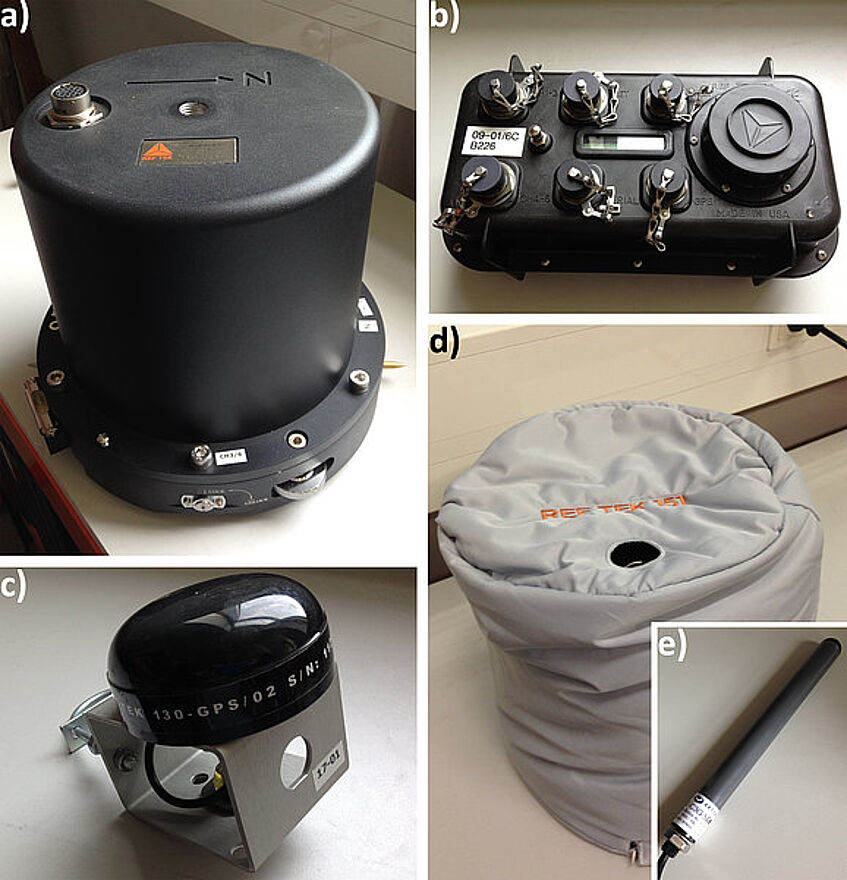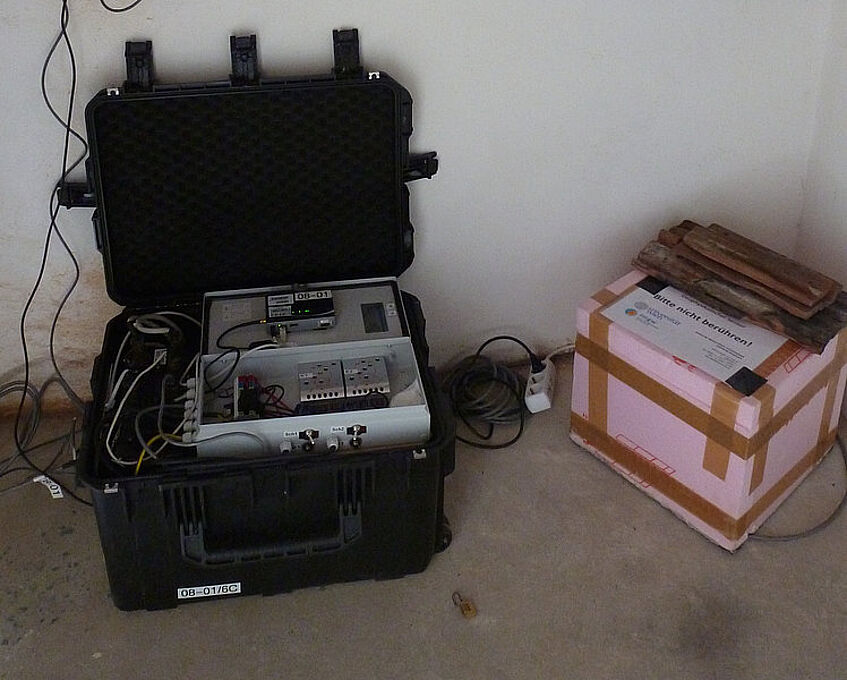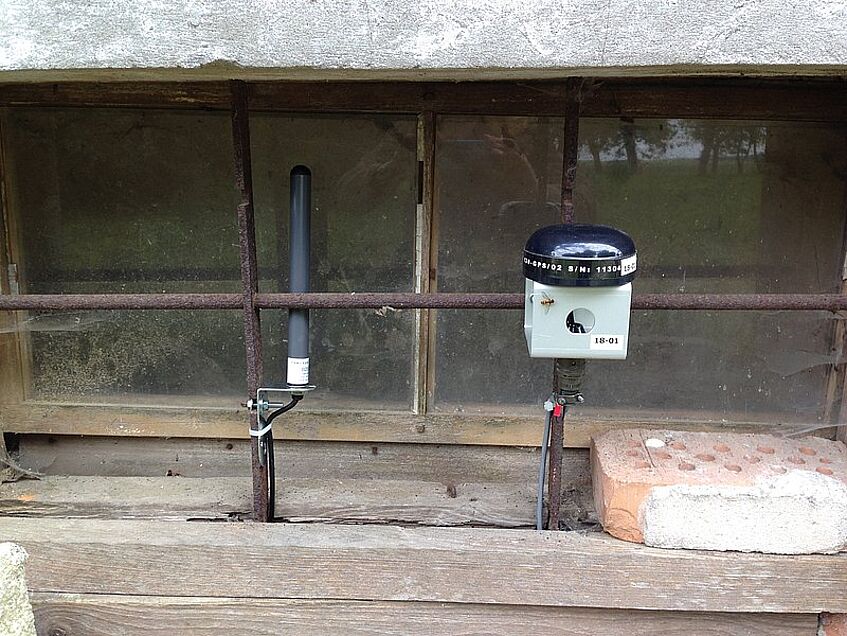Further Links
Instruments

a) Reftek 151 broadband seismometer b) Reftek 131-01 digitizer c) GPS antenna d) Thermal insulation cover e) Cellular antenna (© IMGW)

Box containing the digitizer, cellular router, solar chargers and solar batteries (left), Sensor under Styrofoam insulation (right) (© IMGW)

Cellular antenna (left) and GPS antenna (right) (© IMGW)
Instruments
Each of our 30 seismic stations comprises several components:
- Sensor (Seismometer)
- Thermal insulation
- Digitizer (data logger)
- GPS antenna
- Cellular antenna
- Cellular router
- 12V solar batteries
- optl. solar panels
- optl. fuel cell
We operate seismometers and data loggers made by Reftek. The sensors are Reftek 151 "Observer" broadband seismometers (generations A and B) with 60s corner period. The data loggers are Reftek 130-01 and Reftek 130S digitizers (10x 6 channels, 20x 3 channels). The seismometer is placed on solid ground (such as rock, concrete or tiles) and is thermally insulated by a layer of microfleece and a box made of styrofoam.
All seismic stations are synchronized in time over GPS. The data logger is attached to a cellular router that transmits all recorded data in real-time to our department. From here we forward data to the Zentralanstalt für Meteorologie und Geodynamik and eventually data is permanently archived at the european Orfeus Data Center in the Netherlands. Researcher participating in AlpArray can download the data from there.
The majority of our seismic stations is connected to the regular power grid. Yet, some stations are operated exclusively by solar panels or a combination of a solar panel and a fuel cell.
Metadata: Here you can download the latest metadata containing detailed station response and information.
Dataless Seed - RESP - StationXML
Last update: November 27, 2018 (changed datalogger station A003A) - Download Changelog
